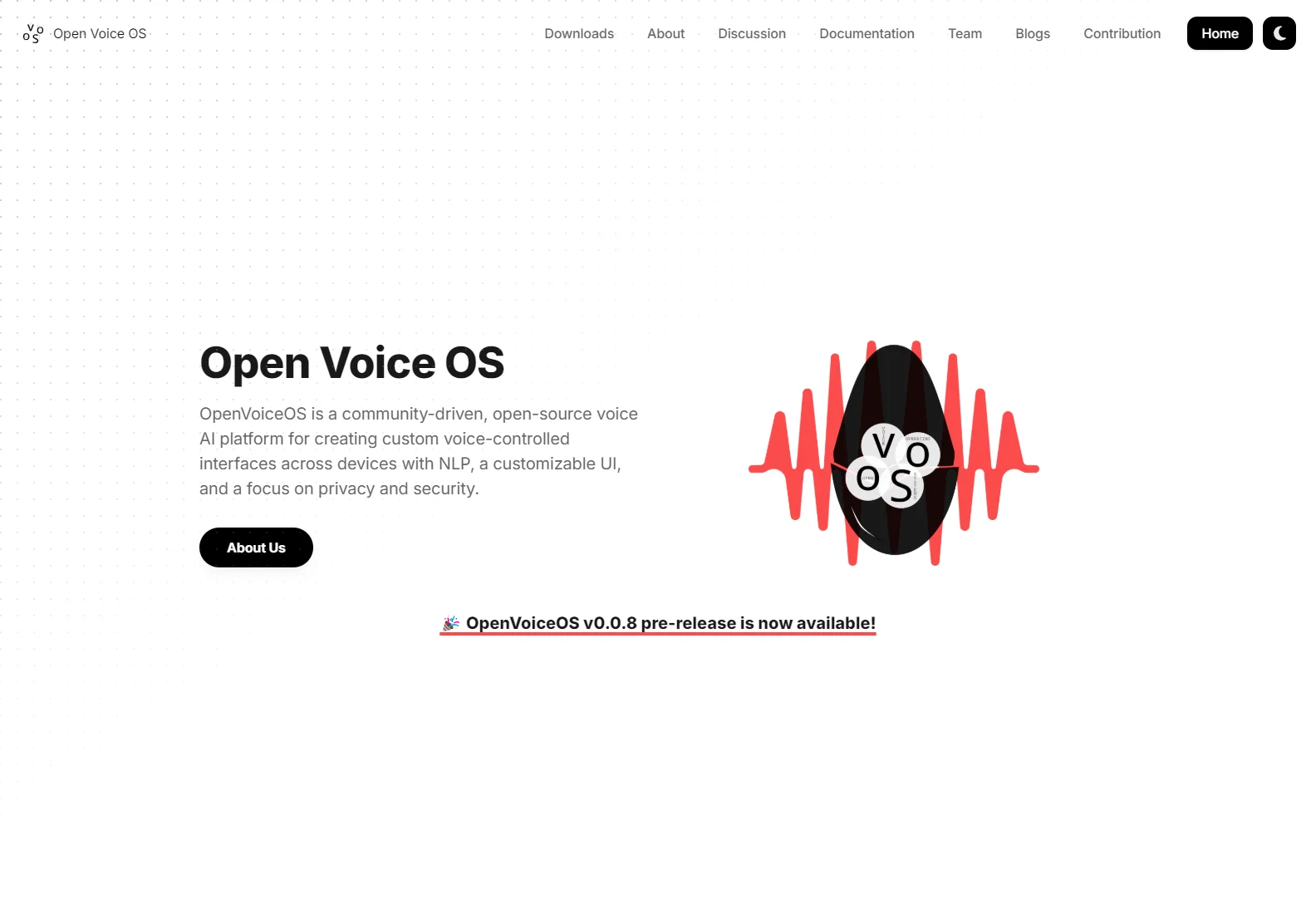Open Voice OS: An Open-Source Voice AI Platform
Open Voice OS (OVOS) is a community-driven, open-source voice AI platform designed for creating custom voice-controlled interfaces across various devices. It leverages Natural Language Processing (NLP), offers a customizable user interface, and prioritizes user privacy and security. This makes it a powerful tool for developers and enthusiasts alike.
Why Choose Open Voice OS?
- Community Driven: OVOS is powered by a global community of developers, fostering collaboration and innovation within the open-source voice assistant landscape. This collaborative environment ensures continuous improvement and a diverse range of functionalities.
- Multi-platform Compatibility: From embedded headless devices and single-board computers to devices with screens, OVOS provides flexibility and adaptability across numerous platforms. This allows for experimentation and customization to fit diverse hardware and software needs.
- Experimentation Focused: OVOS serves as a testing ground for experimental features, allowing developers to test and refine functionalities before integrating them into other open-source voice assistant projects. This accelerates the development cycle and allows for rapid innovation.
- DIY Friendly: The open nature of OVOS empowers developers and contributors to support specific devices and platforms, fostering a vibrant ecosystem of customization and support.
Getting Started with Open Voice OS
Installing OVOS is straightforward. You can choose between two primary methods:
- Python Virtual Environment: Ideal for developers who want to directly interact with and modify the codebase.
- Docker: Provides a stable and user-friendly installation experience, perfect for users who prioritize ease of use.
The installation process involves running a simple command in your terminal. Detailed instructions are available in the official documentation.
Pre-built Image for Raspberry Pi and Mycroft Devices
A pre-built image is available for users of Raspberry Pi and Mycroft devices. This streamlined Linux OS is optimized for embedded systems, low-spec devices, and small screens, providing a ready-to-use environment for Open Voice OS.
Frequently Asked Questions
- How did Open Voice OS start? OVOS originated as MycroftOS. Due to trademark considerations and the desire for greater community involvement, it evolved into Open Voice OS. While initially focused on Mycroft-core, it now maintains an enhanced fork with additional features, ensuring compatibility with Mycroft-core (dev branch).
- What's the relationship between Open Voice OS and Mycroft? Both projects are independent. OVOS initially wrapped Mycroft-core, but now features its own core with enhanced functionality. Despite this, OVOS maintains compatibility with Mycroft, and many contributions are submitted upstream.
- Does Open Voice OS work offline? OVOS-core can operate offline, but some skills and the default speech-to-text engine require an internet connection. Several offline options are available for STT.
- How can I contribute? Contributions are welcome! You can help by testing, reporting bugs, writing documentation, creating skills, or contributing code. Detailed contribution guidelines are available in the documentation.
Contact Us
For further questions or assistance, please visit the official website for contact information and resources.

